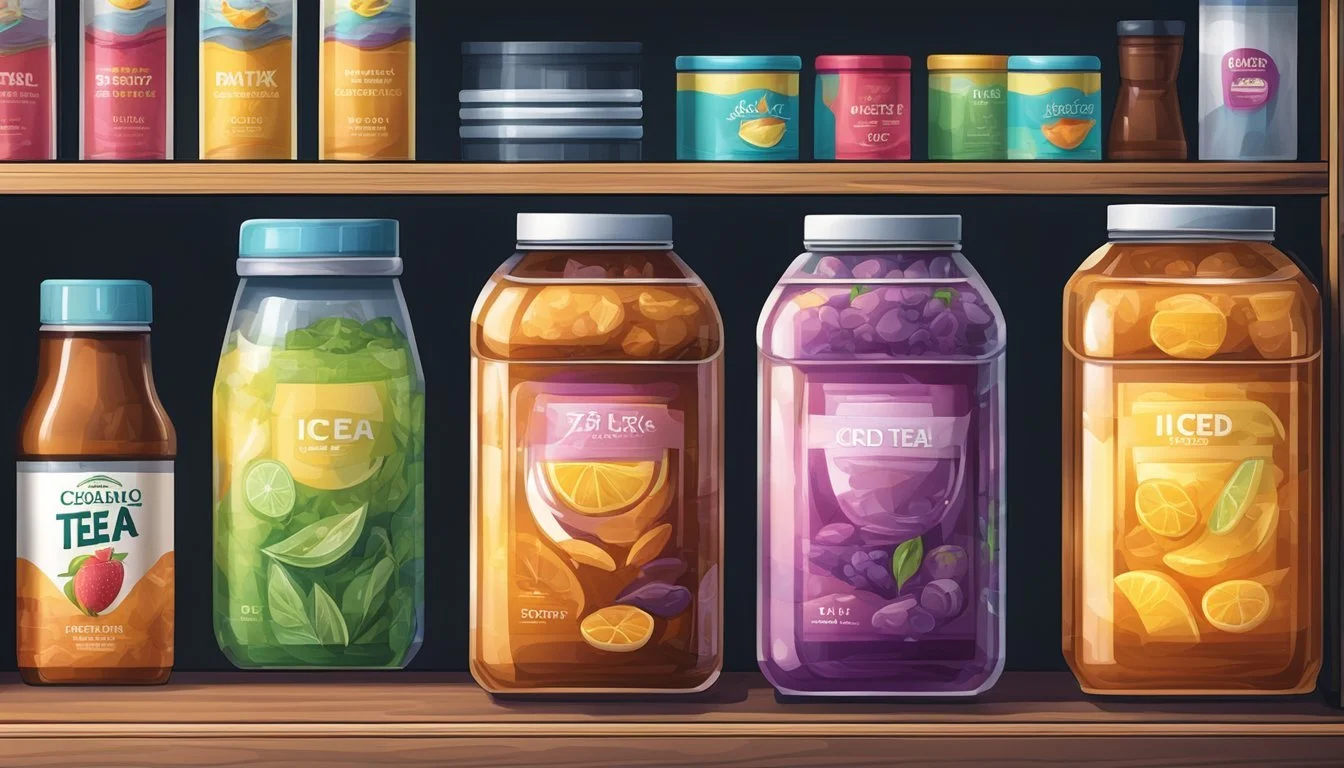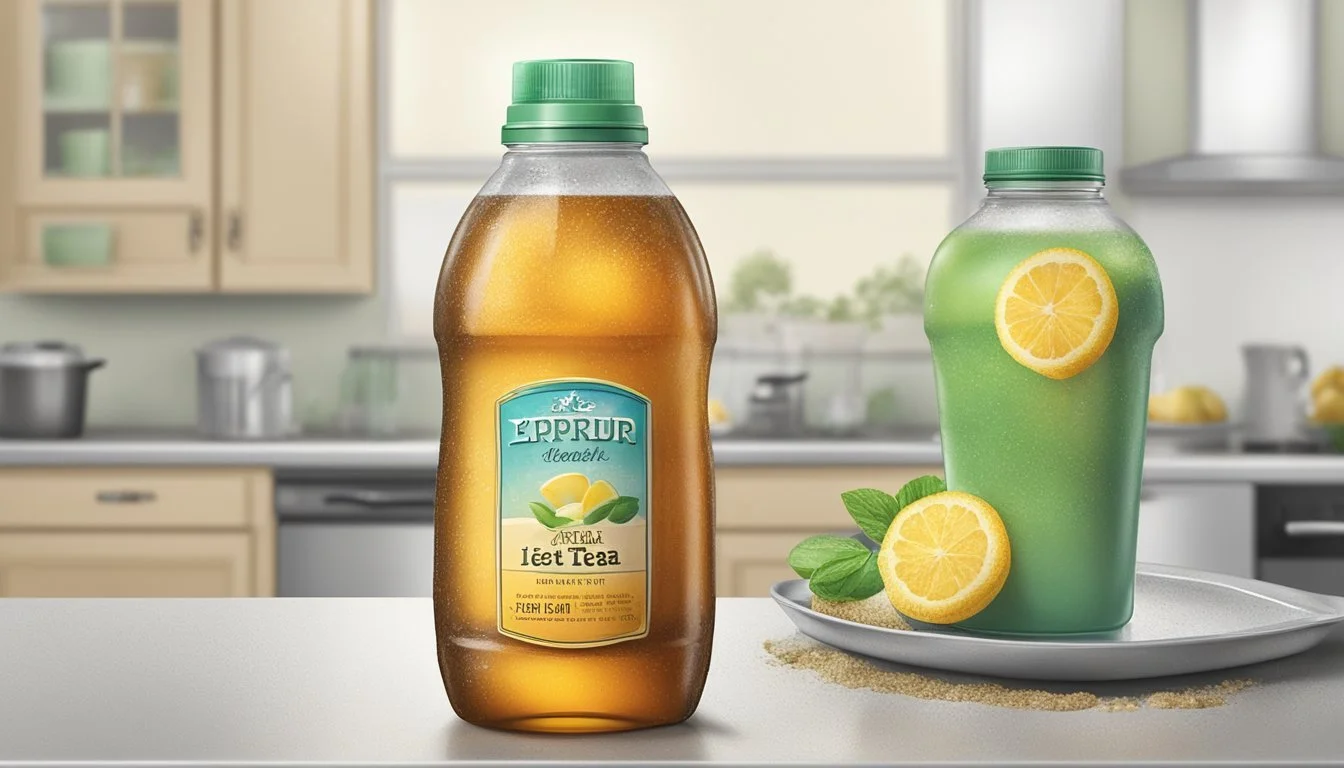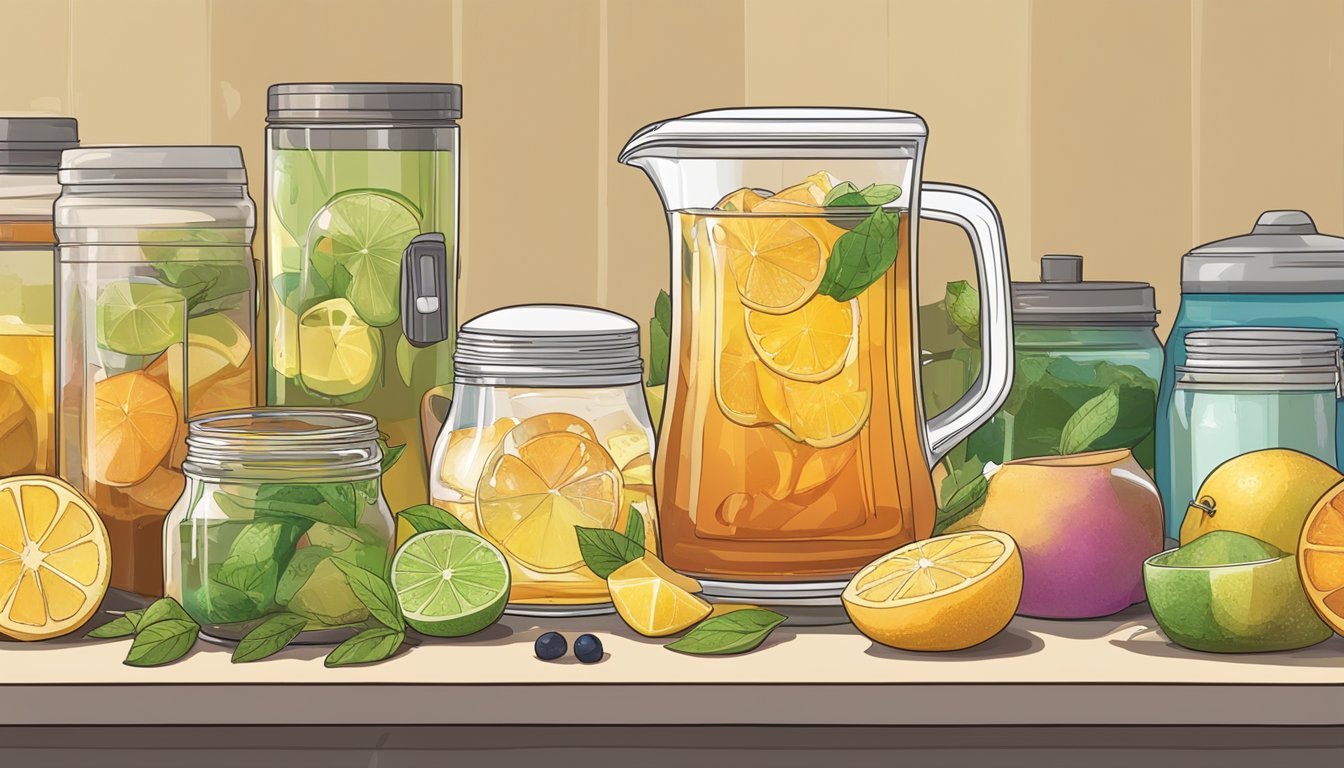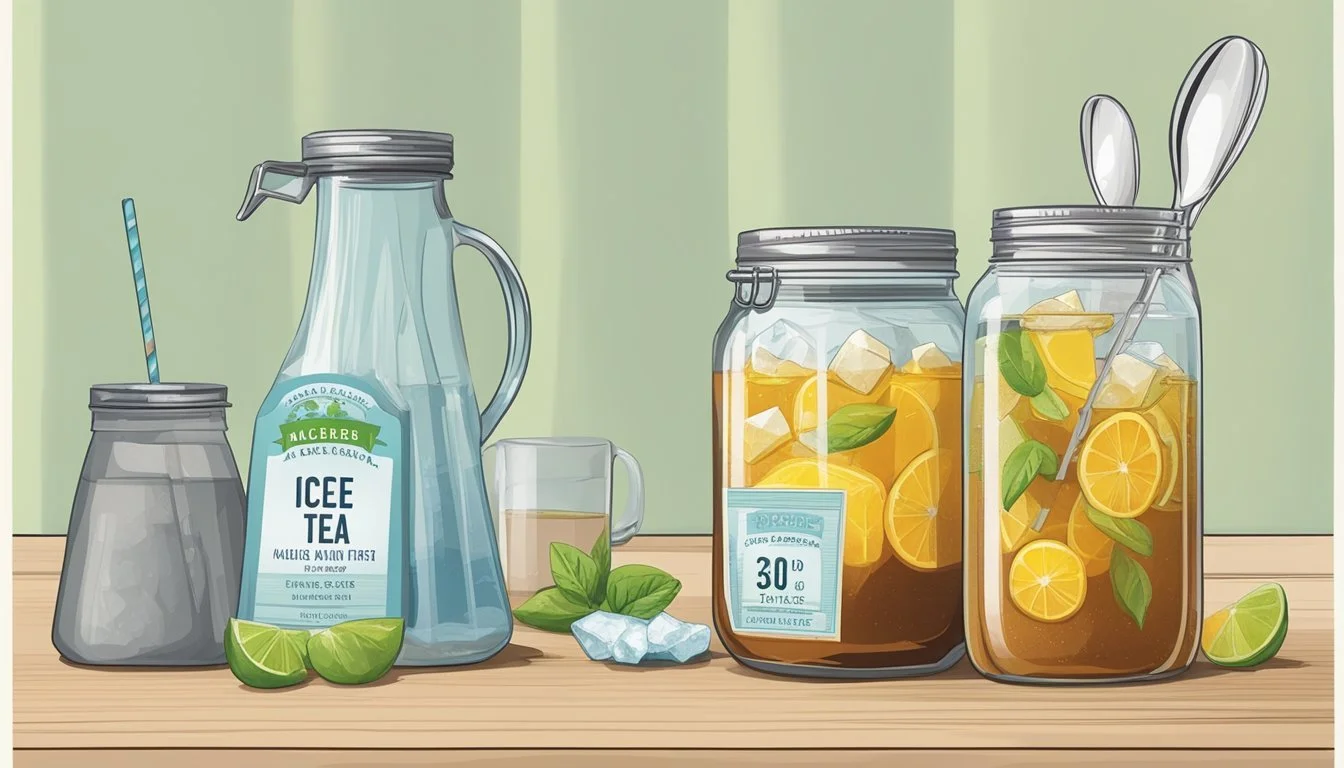How Long Does Iced Tea Mix Last?
Shelf Life and Storage Tips
Iced tea, a refreshing and popular beverage, has a varying shelf life that is influenced by factors such as preparation, packaging, and storage conditions. For those who prefer the convenience of iced tea mix, understanding the product's longevity is essential to enjoying its best quality. An unopened package of iced tea mix typically retains its best quality for about 3 years when properly stored in a cool, dry place. This time frame ensures that the flavors and ingredients maintain their potency before gradual degradation begins.
Once opened, the shelf life of iced tea mix reduces significantly due to exposure to air, moisture, and other environmental factors. Properly stored in a cool, dry place, an opened iced tea mix can last between 6 to 12 months. It is crucial to seal the package or container tightly after each use to maximize its shelf life. Observing the mix for any signs of spoilage, such as changes in color, smell, or taste, is important for assessing its quality beyond the provided estimates.
For homemade or ready-made iced tea, the beverage should ideally be consumed within 7 to 8 hours, as recommended by food safety guidelines, to maintain its freshness and taste. However, if refrigerated, it can last in good condition for about 1 to 2 weeks. Any deviation from these guidelines can result in a decline in the sensory attributes of the iced tea, and in some cases, may pose a risk of microbial growth if stored improperly.
Understanding Iced Tea
Iced tea is a refreshing beverage enjoyed by many around the world. It comes in various types, each with a unique flavor profile, and can offer certain health benefits depending on the ingredients used.
Types of Iced Tea
Iced tea can be categorized based on the type of tea leaves used, such as green tea, black tea, and herbal tea. Green tea is known for being rich in antioxidants and has a delicate flavor. Black tea, on the other hand, is bolder in taste and higher in caffeine. Herbal teas, which are not true teas since they don't come from the Camellia sinensis plant, often include a variety of ingredients like mint, fruits, peach, or pear, providing a wide range of flavor experiences without the caffeine.
Flavor Profile
The taste of iced tea is largely influenced by the type of tea and additional flavorings. For instance, lemon and mint are popular for adding a refreshing zest, while adding fruits like peach can offer a sweet and fruity taste. The specific flavor profile of iced tea is:
Green tea: Mild, subtle, with grassy or floral notes.
Black tea: Robust, strong, with malty or fruity undertones.
Herbal tea: Varies widely, often fruity or minty, does not contain tea leaves.
Nutrition and Health Benefits
Iced teas offer various health benefits, primarily due to the antioxidants present in green and black teas, which are thought to have anti-inflammatory properties. Here's a brief look at the nutritional and health benefits:
Antioxidants: Particularly high in green tea, helping to mitigate oxidative stress.
Caffeine: Found in green and black teas, providing a mild stimulant effect.
Calorie content: Generally low unless sweeteners or additional ingredients are added.
Overall, each type of iced tea brings its own nutritional profile and potential health advantages.
Shelf Life Determinants
The shelf life of iced tea mix is influenced by several key factors, which are critical to maintaining its quality and flavor. Understanding these determinants will ensure the longevity of the product.
Storage Conditions
Iced tea mix's longevity is greatly affected by where and how it is stored. To preserve its quality, an unopened package of iced tea mix should be stored in a cool, dry area. Factors like temperature and moisture play a significant role; storing it at a consistent temperature away from direct sunlight and sources of heat or light can extend its shelf life. Once opened, transferring the mix to an airtight container or sealed ziplock bag can protect it from moisture and other contaminants.
Packaging and Sealing
The original packaging and sealing are designed to protect iced tea mix from environmental factors. Packaged iced tea often comes in air-tight containers, which can maintain the quality of the product for about 18-24 months. The integrity of the seal is crucial; if the packaging is tampered with or damaged, it can significantly decrease the mix's shelf life by allowing air and humidity to affect the product.
Ingredients Impact
The ingredients in an iced tea mix, including whether it is sweetened and the type of preservatives used, also determine its shelf life. Mixes with natural preservatives tend to have a longer shelf life. Additionally, the flavor can degrade over time, with changes noticeable after the peak quality period has passed. Proper storage can help maintain the boldness of the flavor, but naturally, over extended periods, the intensity will diminish.
Optimal Storage Practices
To maintain the freshness and flavor of iced tea mix, specific storage practices are critical. The following subsections detail how one can preserve the quality of iced tea mixes through proper refrigeration, minimizing air exposure, and diligent labeling.
Refrigeration and Freezing Techniques
To prolong the shelf life of iced tea mix, it should be stored in a cool and dry place. If refrigeration is chosen, the tea mix will generally remain at its best quality for 18 to 24 months. Freezing the iced tea mix is not commonly recommended as it could lead to moisture crystallization and alteration of flavor upon thawing.
Air Exposure Minimization
An airtight container is essential to minimize air exposure. Oxygen can degrade the quality of the iced tea mix, so ensuring the package is sealed tightly after each use is key. Containers that are clear should be stored in a cabinet or pantry to protect the mix from light, which can also impact freshness.
Labeling and Tracking
Using labels and markers to note the 'best before' or expiration date of an iced tea mix once it's opened will help track its shelf-life. Consumers should always check for signs of spoilage before use since the quality can vary based on storage conditions. Regularly updating the label with the opening date can assist in using the mix before its quality diminishes.
Signs of Spoilage
When assessing whether an opened iced tea mix has gone bad, certain spoilage signs are definitive indicators. They should evaluate visual, textural, and olfactory changes, as well as look for any mold or bacterial growth. It's imperative for one's health to recognize these signs to avoid consuming spoiled products.
Visual and Textural Changes
Visually inspect the iced tea mix for any alterations in color or appearance. A change from its original hue to a darker or dull shade may suggest spoilage. Texture-wise, any thickening or sediment at the bottom of the container can also indicate that the iced tea mix should be discarded.
Olfactory Indicators
The scent of an iced tea mix can reveal its condition. If there is an off odor or an uncharacteristic smell that differs from its fresh, aromatic scent, it is likely spoiled. One should trust their sense of smell to determine if the tea is still fit for consumption.
Mold and Bacterial Growth
The presence of mold—visible as fuzzy spots in various colors—or any signs of bacterial growth are clear indications that the iced tea mix has gone bad. If mold or bacteria are detected, the tea mix poses health risks and should immediately be discarded to ensure safety.
Mix and Brew Variations
When considering the longevity of iced tea mix and its variations, one must take into account the preparation method and added ingredients. These factors can influence both the shelf life and the flavor profile of the final product.
Iced Tea Mix Creation
Iced tea mix typically involves a blend of tea extracts, sweeteners, and sometimes flavorings. Tea type is crucial as it determines the base flavor. For a freshly brewed experience, one should look for mixes that contain fewer preservatives and artificial flavors. Fresh mixes tend to have shorter shelf lives but offer a more authentic taste.
Preparing Sun Tea and Cold Brew
Sun tea and cold brew methods can also affect the shelf life of iced tea. Sun tea is made by steeping tea bags in water and placing them in direct sunlight for several hours. Cold brew is created by steeping tea bags or loose tea in cold water for an extended period, usually overnight. Both methods should be consumed within eight hours after brewing to avoid potential bacteria growth – the mix can become a breeding ground for microbes if left too long at room temperature.
Flavor Enhancements
Flavor additions can be achieved through syrups, sweeteners, fresh fruit, and herbs. These can transform simple iced tea into a variety of taste sensations:
Fruit Syrups: Add a rich, sweet dimension to tea; peach and passion fruit are popular options.
Sweeteners: Adjust sweetness with sugar, honey, or artificial sweeteners.
Fresh Fruit: Offers subtle flavors and a refreshing twist; citrus or berries are common choices.
Herbs: Mint or basil can introduce a fresh, aromatic note to the beverage.
Each variation can introduce its own storage parameters, so it's essential to consider these when determining shelf life.
Life Span of Iced Tea
The longevity of iced tea varies greatly depending on whether it is commercially packaged or homemade, and the conditions under which it is stored. The following subsections explore the specifics of iced tea mix shelf life, considering both opened and unopened products, as well as the effects of temperature on the beverage's duration.
Commercially Packaged Tea Longevity
Commercially packaged iced tea mixes maintain their best quality for 18 to 24 months at room temperature once opened, assuming they are properly stored with their packages tightly sealed. Unopened, these products can remain good for at least a year past the "best by" date on their packaging. The preservatives and packaging methods used in commercially prepared mixes lend them a longer shelf life compared to homemade versions.
Homemade Iced Tea Duration
Homemade iced tea's shelf life is noticeably shorter, lasting typically between 3 to 4 days when refrigerated. This is because homemade brews lack preservatives and the strict packaging standards that commercial products benefit from. For optimal freshness, it is crucial to store homemade iced tea in an airtight container within the refrigerator immediately after preparation.
Temperature's Influence
Temperature plays a critical role in the shelf life of both commercial and homemade iced tea. Heat can accelerate deterioration, while cool temperatures help to preserve the tea's quality. Opened iced tea mix should be kept away from heat sources and stored in cool, dry places to extend its shelf life. Conversely, homemade iced tea must be refrigerated consistently to maintain its flavor and prevent spoilage.
Safe Consumption Guidelines
In ensuring safe consumption of iced tea mix, one must consider drinkability, contamination prevention, and the optimal time frame for consumption. These factors contribute to maintaining both the quality and safety of the product.
Determining Drinkability
To ascertain if an unopened package of iced tea mix is drinkable, one should check the expiration date. Although an unopened iced tea mix can often retain its best quality for up to 3 years when properly stored, the expiration date provides a guideline for peak quality. It’s important to note that a mix might still be safe to consume after this date, but its flavor could diminish.
Preventing Contamination
Maintaining cleanliness is paramount to preventing contamination and ensuring the safety of iced tea. Consumers are advised to brew iced tea at 195 F for 3-5 minutes to reduce bacterial growth. Once brewed, the equipment, such as the tea brewer, storage dispenser, and faucet, should be kept clean to avoid microbes entering the tea.
Optimal Consumption Period
The optimal period for consuming prepared iced tea is within 7 to 8 hours to ensure food safety. Beyond this period, the risk of contamination increases, compromising the quality and safety of the tea. Brewed iced tea should not be kept at room temperature for more than 8 hours, and it should be refrigerated during this time to mitigate the risk of bacterial growth.








